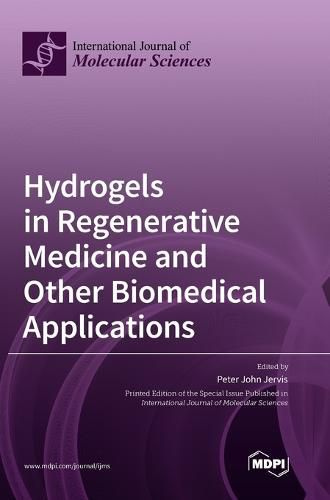Readings Newsletter
Become a Readings Member to make your shopping experience even easier.
Sign in or sign up for free!
You’re not far away from qualifying for FREE standard shipping within Australia
You’ve qualified for FREE standard shipping within Australia
The cart is loading…






This title is printed to order. This book may have been self-published. If so, we cannot guarantee the quality of the content. In the main most books will have gone through the editing process however some may not. We therefore suggest that you be aware of this before ordering this book. If in doubt check either the author or publisher’s details as we are unable to accept any returns unless they are faulty. Please contact us if you have any questions.
Great strides have been made in the area of hydrogel science since the first hydrogels were described in the 1960s. Hydrogels usually consist of three-dimensional matrices of hydrophilic polymers, held together by chemical or physical crosslinks, or supramolecular assemblies of small amphiphilic molecules. The gelation process occurs in response to a physical or chemical stimulus, such as temperature, pH, electric or magnetic field, enzymatic modification, light, and others. Consisting of mainly water molecules, they represent a unique class of materials, with many applications such as cell therapeutics, cartilage/bone regeneration, sustained drug release and drug delivery systems, tissue engineering, and 3D bioprinting. Despite these great strides, there is still much more to discover in this area. This Special Issue is focused on the use of hydrogels in tissue and bone regeneration. Hydrogels are particularly suited for this purpose as their physical characteristics resemble that of the extracellular matrix; as such, they have found applications as an extracellular medium for cancer cells, stem cells, and neuronal cells. This Special Issue also includes research papers on the other biomedical applications of hydrogels.
$9.00 standard shipping within Australia
FREE standard shipping within Australia for orders over $100.00
Express & International shipping calculated at checkout
Stock availability can be subject to change without notice. We recommend calling the shop or contacting our online team to check availability of low stock items. Please see our Shopping Online page for more details.
This title is printed to order. This book may have been self-published. If so, we cannot guarantee the quality of the content. In the main most books will have gone through the editing process however some may not. We therefore suggest that you be aware of this before ordering this book. If in doubt check either the author or publisher’s details as we are unable to accept any returns unless they are faulty. Please contact us if you have any questions.
Great strides have been made in the area of hydrogel science since the first hydrogels were described in the 1960s. Hydrogels usually consist of three-dimensional matrices of hydrophilic polymers, held together by chemical or physical crosslinks, or supramolecular assemblies of small amphiphilic molecules. The gelation process occurs in response to a physical or chemical stimulus, such as temperature, pH, electric or magnetic field, enzymatic modification, light, and others. Consisting of mainly water molecules, they represent a unique class of materials, with many applications such as cell therapeutics, cartilage/bone regeneration, sustained drug release and drug delivery systems, tissue engineering, and 3D bioprinting. Despite these great strides, there is still much more to discover in this area. This Special Issue is focused on the use of hydrogels in tissue and bone regeneration. Hydrogels are particularly suited for this purpose as their physical characteristics resemble that of the extracellular matrix; as such, they have found applications as an extracellular medium for cancer cells, stem cells, and neuronal cells. This Special Issue also includes research papers on the other biomedical applications of hydrogels.